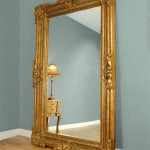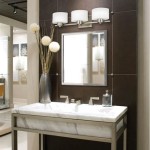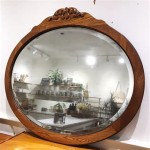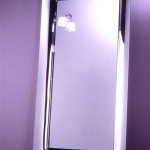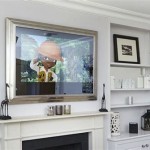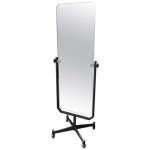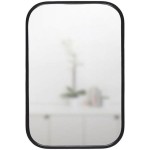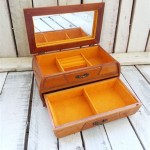Mirror Tiles Kitchen Backsplash
Mirror tiles offer a unique and stylish option for kitchen backsplashes. Their reflective surfaces can dramatically transform a space, creating an illusion of greater depth and amplifying natural light. This article will explore the benefits, considerations, installation process, and maintenance tips for mirror tile backsplashes.
Benefits of Mirror Tile Backsplashes
One of the most significant advantages of mirror tiles is their ability to brighten a kitchen. They effectively bounce natural and artificial light around the room, making even small kitchens appear larger and more open. This is particularly beneficial in kitchens with limited natural light sources.
Mirror tiles can also enhance the existing décor. Their reflective quality highlights the colors and patterns of surrounding elements, such as countertops, cabinetry, and decorative items. This creates a visually appealing and cohesive design.
Compared to other backsplash materials like natural stone or ceramic tile, mirror tiles are often a more budget-friendly choice. They are readily available in various sizes and styles, offering homeowners an affordable way to achieve a high-end look.
Considerations Before Installation
While mirror tiles offer numerous benefits, it’s important to consider potential drawbacks. The reflective surface can magnify any mess or imperfection, requiring more frequent cleaning than other backsplash materials. Grease splatters, fingerprints, and water spots are easily visible and necessitate prompt attention.
The reflective nature of mirror tiles can also become overwhelming if used excessively. Careful planning and strategic placement are crucial to avoid a visually cluttered or dizzying effect. Consider using mirror tiles as accents or combining them with other materials for a balanced aesthetic.
Depending on the specific type of mirror tile chosen, installation can be challenging. Some tiles are more fragile than others and require precise cutting and handling to avoid breakage. Proper surface preparation is also essential for successful adhesion and longevity.
Types of Mirror Tiles
Various types of mirror tiles are available, each with unique characteristics and aesthetic appeal. Traditional square or rectangular tiles offer a classic and versatile option, suitable for various design styles. Antique mirror tiles with a distressed or aged finish add a vintage touch.
Specialty shapes like hexagons, diamonds, and subway tiles offer a more contemporary feel. Mosaic mirror tiles composed of smaller pieces create intricate patterns and textures. Beveled mirror tiles, with their angled edges, add depth and dimension to the backsplash.
Installation Process
Proper surface preparation is paramount for a successful mirror tile installation. The wall must be clean, dry, and level. Any imperfections or unevenness should be addressed before tiling begins. Applying a primer specifically designed for smooth surfaces can enhance adhesion.
Choosing the appropriate adhesive is crucial for securing the mirror tiles to the wall. Mirror mastic, a specialized adhesive, is recommended for its strong bonding capabilities. Applying the adhesive evenly to the back of each tile ensures a secure and long-lasting installation.
Once the tiles are affixed to the wall, allow sufficient drying time according to the adhesive manufacturer's instructions. Grouting is typically not necessary for mirror tiles, but if used, choose a non-sanded grout to avoid scratching the mirrored surface.
Maintenance and Cleaning
Maintaining the pristine appearance of a mirror tile backsplash requires regular cleaning. Wipe down the tiles with a soft, damp cloth and a mild glass cleaner. Avoid abrasive cleaners or scrubbing pads, as these can scratch the mirrored surface.
For stubborn grease or grime, a solution of warm water and vinegar can be effective. Dry the tiles thoroughly after cleaning to prevent water spots and streaks. Regularly cleaning the backsplash will help maintain its shine and reflectivity.
Design Tips for Mirror Tile Backsplashes
Using mirror tiles strategically can maximize their impact without overwhelming the space. Consider using them as accents within a larger backsplash design. Combining mirror tiles with other materials like subway tiles or natural stone can create a balanced and visually interesting aesthetic.
In smaller kitchens, strategically placed mirror tiles can create the illusion of more space. Placing them on a wall perpendicular to a window can help reflect natural light deeper into the room. Using larger mirror tiles can further enhance this effect.
The style of mirror tiles chosen should complement the overall kitchen design. For contemporary kitchens, geometric shapes and sleek lines can create a modern look. In traditional kitchens, classic square or rectangular mirror tiles or antique mirror tiles can maintain a cohesive style.
5 Stunning Mirror Tiles To Brighten Your Room Tileist By Tilebar

Give Your Kitchen An 80 S Inspired Ugrade Mirrored Subway Tile Contemporary Paint

Antique Mirror Kitchen Tiles Splashbacks

Mirrored Tiles Mirrorworld

5 Stunning Mirror Tiles To Brighten Your Room Tileist By Tilebar

3 X 12 Beveled Antique Mirror Glass Subway Tile Free

Mirrored Picket Backsplash Tiles Design Ideas

Mirrored Chevron Kitchen Backsplash Tiles Design Ideas

53 Mirror Backsplash Unique Stylish Reflective Backsplashes

3x6 Beveled Mirror Subway Tile In Paris Gray Tilebar Com

